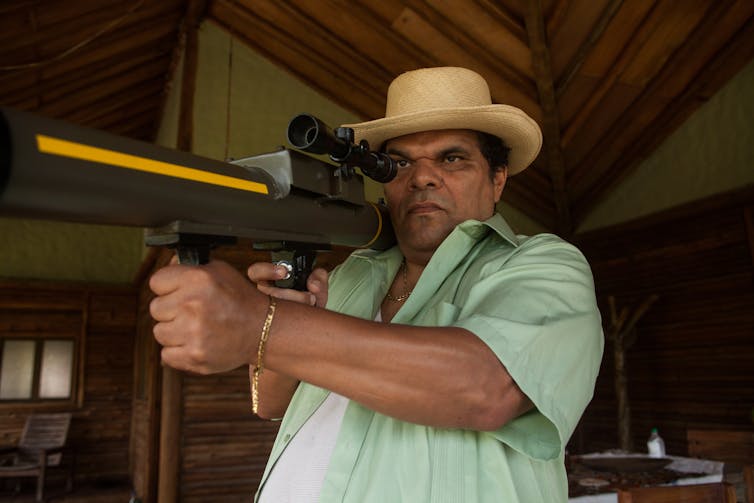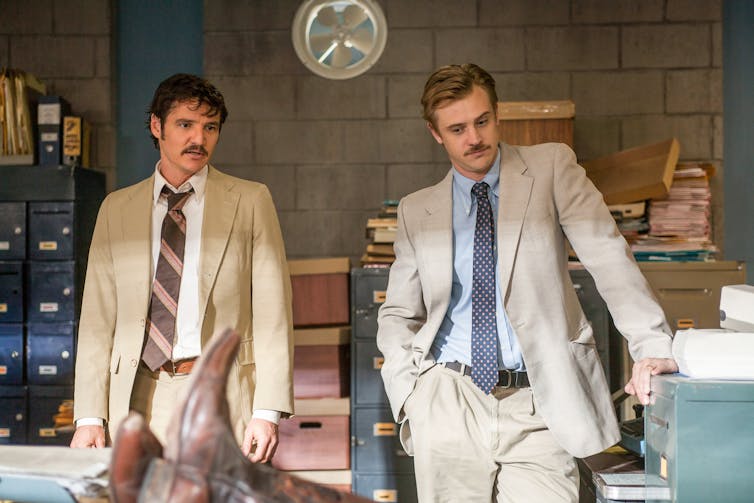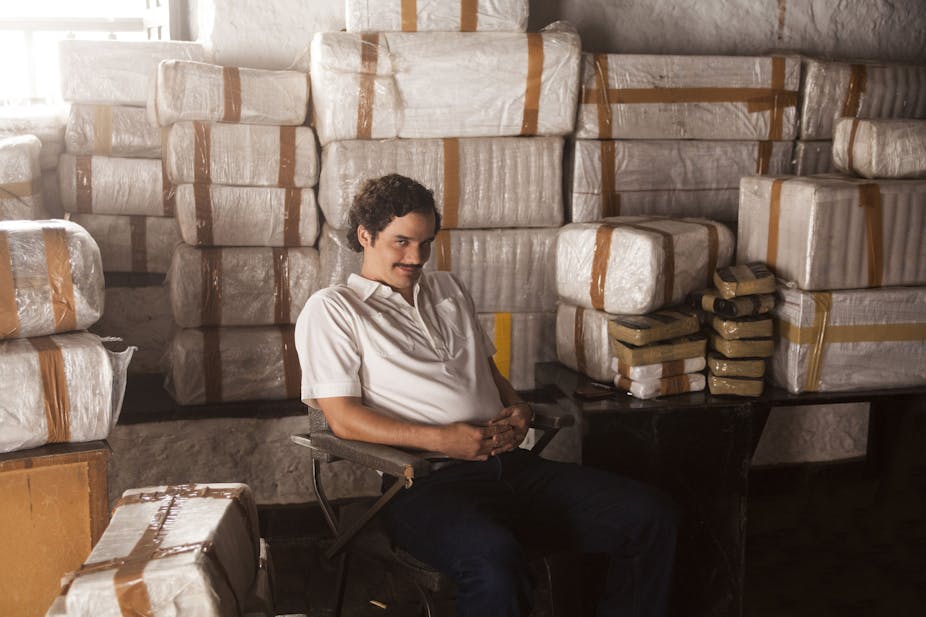“We had no idea what we were in for,” says US DEA agent Steve Murphy (Boyd Holbrook) in the new Netflix series, Narcos, a fictional portrayal of drug cartels in Colombia in the 1980s. His deep gravelly voice conveys authority and experience. It is a return to the single story of the dangers south of the border, that potent compelling narrative that narrows views of a people or nation. The “we” includes the viewer and “what we are in for” is a thrilling look at these dangers up close.
The Latin American drug trade is hot cultural property this autumn. Cartel Land, a documentary looking at the situation in real-life Mexico, offers up a similar story. An American vigilante fighting against cartels north of the border says, as if in reply to Murphy and with an equally gravelly voice: “It’s the cartels. They’re the ones terrorising their people and now they’re starting to do it over here.”
At a time when Donald Trump feels free to launch a tirade against Mexico’s “drugs and rapists”, these are sensitive times to re-circulate these tired tropes. The here and the there, the us and the them echo and repeat, damaging the investigative aim of Cartel Land and providing much of the vicarious thrill of Narcos. This harks back to the tropes of the Wild West, seen in the classic Westerns of the 1940s and 1950s: the good guys fight on behalf of the righteous citizens against the evil bad guys.

Vigilantes on patrol
Cartel Land cuts between parallel narratives in the US and Mexico. North of the border, we have the US vigilantes, self-appointed protectors of the border region. They present themselves as citizen defenders, considering it their role to stymie the cartels by arresting illegal immigrants.
All this self-aggrandising looks overblown against the violence south of the border. In Mexico, the crew accompany the autodefensas, armed vigilantes fighting the Knights Templar, a cartel who dominated the state of Michoacán from 2011 up to the arrest of their leader, La Tuta, in February 2015. The filmmakers had unique access to the autodefensas and the film traces the rise and fall of its founder, Jose Manuel Mireles Valverde, and the transformation of the group into a state-sanctioned paramilitary organisation, Fuerza rural (rural force).
The story of the autodefensas sets Mireles Valverde up as a respectable and well-liked physician who is supported by a majority of locals to head up the autodefensas. The crew accompany them on raids, attacks, watching as they round up and torture alleged cartel members. The increasingly unpalatable activities and the decline in Mireles Valverde’s reputation and power bring the narrative to an inconclusive end.
US and them
All this violence is juxtaposed with straight to camera interviews with Tim Foley, the leader of the US militia group, and observational footage of their training and activities. The style, and the contrast, given by the filmmakers invites viewers to identify with this group’s perceived problems but with no exploration of their implication in violent activities.
The parallel stories are incongruous. The Mexican parts reveal some of the messy complexity of the battle for control of territory, the collapse of the rule of law, and provides some insight into the trauma caused by experiencing or witnessing torture, losing loved ones and living with the constant threat of violence. We are invited to observe the ugliness of what the drug wars involve. But the US footage is sterilised in comparison.
The documentary privileges the fringe group from the US and presents their concerns (immigration, drug trafficking) as equivalent to those of the Mexicans (failed state, death, and torture), which trivialises what is happening in Mexico, relieves the US of any responsibility and draws on assumptions about the value of life either side of the border. That is, to be protected at all costs in the US and disposable in Mexico.
Getting the job done
The same sensationalising of violence feeds into the narrative in Narcos. Based on the story of the infamous Pablo Escobar, it is told from the point of view of Murphy, the DEA agent sent in to hunt him. By using this point of view the series falls into the same trap as Cartel Land: it gives the setting, Medellín, Colombia, a chaotic and illicit flavour, and mediates the story through someone who sees the local as unfamiliar and threatening.

Conversely, the show’s director, José Padilha, says that he set out to show how “the bad guys, the good guys, they have something in common: they are human beings”. Human beings who, depending on the context, may drop their ethical stance to “get the job done?” This privileging of an outsider perspective serves to reinforce the view that Latin America is a violent space populated by individuals whose lives are disposable. It is also one of the reasons Colombians objected to the series.
The trope of the dangerous Latinos lurking somewhere south of the US-Mexico border posing a threat to the north is oft repeated. But this does not relieve the makers of the responsibility to challenge it. Latino lives should matter. Days after the first anniversary of the disappearance of 43 students in Mexico it is important to remember that the responsibility lies in telling the full story rather than trivialising violence based on real events. The danger of the single story is that it does not allow for a space for justice and change.

